Latest News
November 24, 2009
By Kenneth Wong
In February, roughly a week before Valentine’s Day, Autodesk began teasing Inventor users with the promise of a hybrid CAD program, one that would allow you to flutter back and forth between the traditional parametric modeling and the easier direct modeling. The technology was still in incubation at the time. It was dubbed, quite appropriately, Inventor Fusion (“Autodesk Joins the Hybrid CAD Movement with Inventor Fusion,” February 5, 2009).
In June, when Inventor Fusion finally made its debut, it delivered what turned out to be a direct modeler, without the anticipated round-tripping function connecting it to parametric modeling. In its first public outing as a Technology Preview 1, Inventor Fusion fulfilled only half of what was supposed to be a parametric-direct combo package (“Inventor Fusion, Ready for Inspection,” July 24, 2009).
The other half came in October, as a plug-in called Change Manager. Part of Inventor Fusion Technology Preview 2, the little module gets installed in Autodesk Inventor 2010 (not in Fusion but in regular Inventor). This effectively works as a bridge between Fusion’s direct-modeling tools and standard Inventor’s parametric-modeling environment.
Its limitations notwithstanding, Change Manager raises the bar in the midrange CAD arena. Many of Autodesk’s rivals can claim to offer direct editing. Some, like Siemens PLM Software, can legitimately boast a head start in direct-modeler development, since its Synchronous Technology (available for both Solid Edge and NX) premiered a year earlier than Inventor Fusion. But taken together, Change Manager, Autodesk Inventor, and Inventor Fusion make a trilogy that offers something few competing packages do—direct-to-parametric conversion.
The Workflow
The download for Inventor Fusion Technology Preview 2 contains not one but two executable files. One installs Change Manager to your existing copy of Autodesk Inventor 2010. (This has to be a subscription license, as it needs some periodic updates made available to subscribers.) The other installs an updated version of Inventor Fusion.
The recommended workflow runs as follows:
Step One: Create your parametric part in Autodesk Inventor 2010, then save it as a native Inventor file (.ipt).
Step Two: Load the part into Inventor Fusion, then make the changes you desire using direct editing. Afterwards, save the modified part in Inventor Fusion’s default DWG format (.dwg).
Step Three: Reopen the DWG file from Inventor Fusion in regular Inventor. Change Manager plug-in will automatically identify the direct edits made in Inventor Fusion, then present you with a table showing all the changes as comparable parametric features. You can go through the list and adopt (or reject) them one at a time, in a sequential order. Once this process is completed, you’ll have a new parametric part, with a revised feature history that takes into account the direct edits you’ve made in Inventor Fusion earlier.
Unquestionably, the workflow involving two separate programs is a cumbersome way to move from one environment to the other. Bear in mind, however, that Autodesk’s vision is to incorporate what’s currently found in Inventor Fusion into standard Inventor. Therefore, in time, you can expect an all-encompassing environment where you may make direct edits on a parametric part, then convert these edits into parametric equivalents in a single program window.
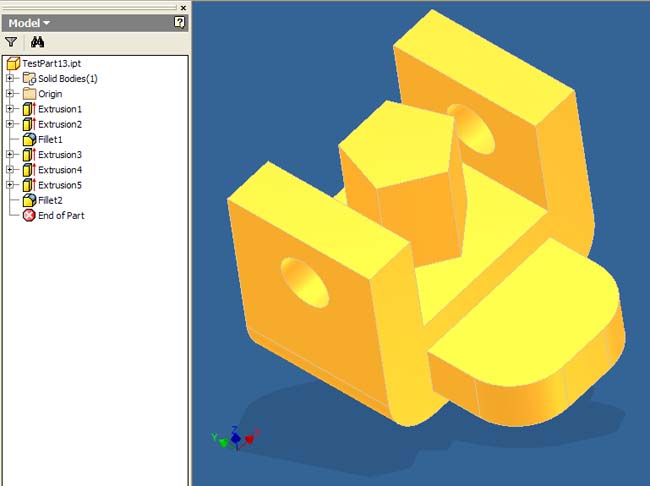 Fig 1. A new parametric part is created in Autodesk Inventor 2010, using classic parametric modeling methods. |
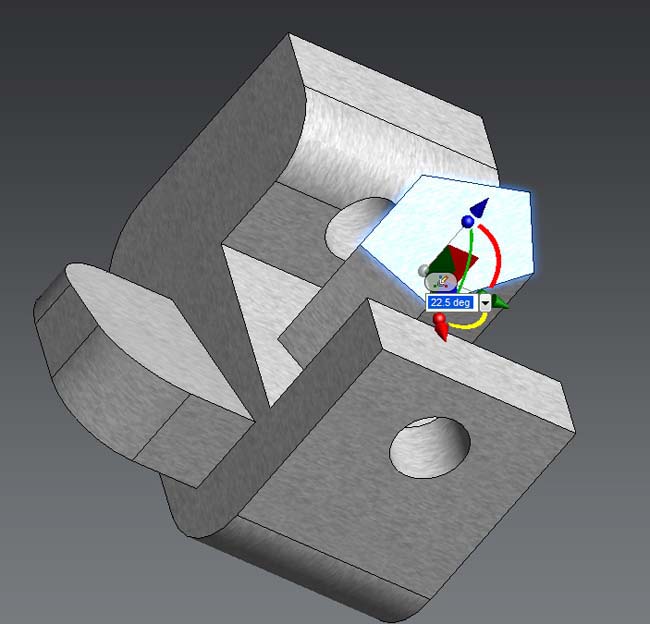 Fig 2. The part is imported into Inventor Fusion (Technology Preview 2) and edited, using direct editing tools. The most disruptive edit is on the top face of the pentagon, which has been rotated and tilted to an odd angle. |
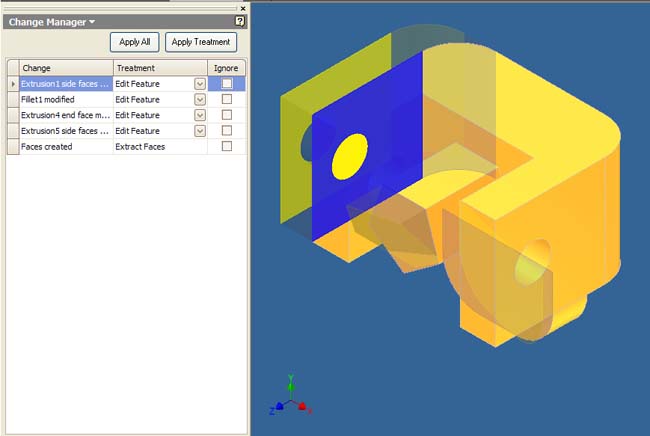 Fig 3. When the part is reopened in Autodesk Inventor, Change Manager identifies and lists the modifications in a table. |
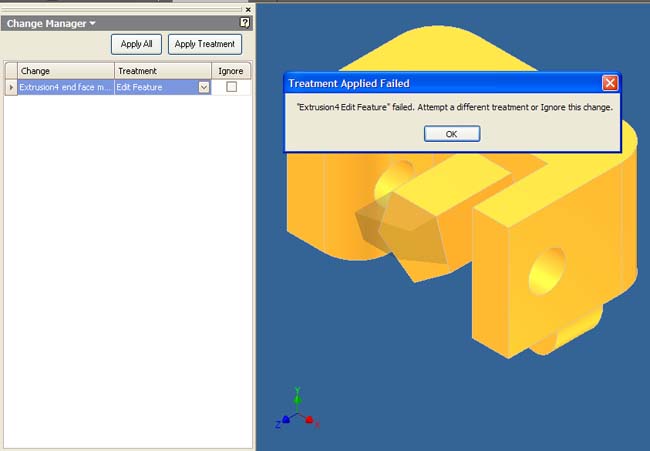 Fig 4. Change Manager converts all the direct edits into parametric equivalents—all except one, the change to the pentagon, which is rejected. |
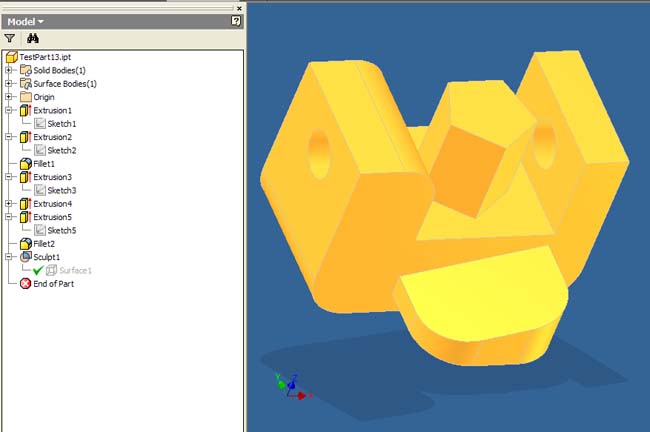 Fig 5. The modified part, as seen in Autodesk Inventor 2010. The direct edits adopted by Change Manger are now part of the model’s history tree. |
Limitations
Change Manager is quite adept at translating certain direct edits—like filleting a corner or extruding a profile—into parametric steps. But some of the more complex direct edits, like rotating an extruded face at an odd angle, may stump its conversion algorithm, giving you an error message.
As the code matures, Change Manager’s ability to recognize and convert direct edits into parametric steps will improve. But some direct edits may simply be too taxing to convert, as parametric modeling principles cannot accommodate certain types of direct geometry manipulation.
At the present, when confronted with geometric changes that it cannot resolve, Change Manager gives you the option to ignore it (in other words, reject that specific direct edit). A better approach might be to give users the option to accept the new geometry as an independent entity, treating it similar to how a parametric program typically treats imported geometry with no history (or “dumb geometry”).
Despite its detractions, Change Manager does complete the roundtrip between parametric and direct editing. Once the conversion works better and the workflow is consolidated into a single program, Autodesk Inventor is poised to become a tough act to follow.
For a demonstration of Inventor Fusion with Change Manager, watch the accompanying video report or watch the previous report here.
Subscribe to our FREE magazine, FREE email newsletters or both!
Latest News
About the Author
Kenneth Wong is Digital Engineering’s resident blogger and senior editor. Email him at [email protected] or share your thoughts on this article at digitaleng.news/facebook.
Follow DE





